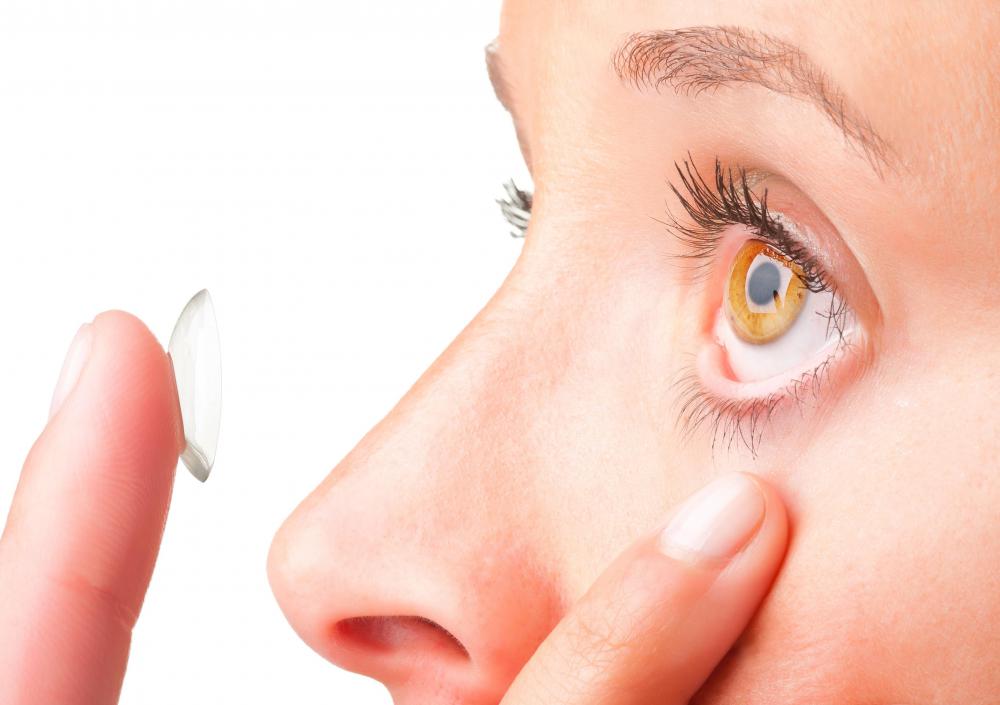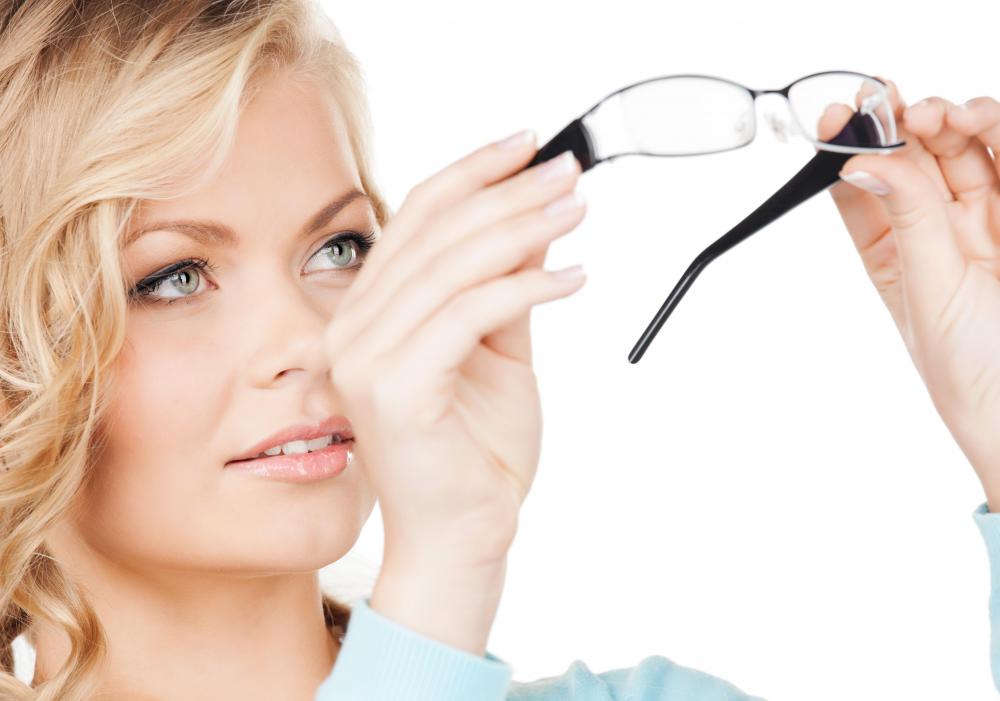At TheHealthBoard, we're committed to delivering accurate, trustworthy information. Our expert-authored content is rigorously fact-checked and sourced from credible authorities. Discover how we uphold the highest standards in providing you with reliable knowledge.
What is Irregular Astigmatism?
Irregular astigmatism is a type of eye disorder in which the surface of the cornea is marred by peaks, ridges, valleys, and other abnormal shapes. When the cornea is not uniformly smooth, light cannot be collected and focused onto the lens properly. A person with mild irregular astigmatism may have slightly blurry or distorted vision, while a severe case can cause multiple images to appear in each eye that are disorienting and sometimes debilitating. The condition is generally more difficult to treat than other types of astigmatism, but specialized contact lenses and advancements in surgical techniques allow many patients to enjoy at least some relief from their symptoms.
Most people who have astigmatism suffer from the regular variety. In regular astigmatism, the cornea is more or less smooth, but it is on an abnormal curvature. Light enters the lens at a steeper or shallower angle than normal, leading to mild distortions. In the case of irregular astigmatism, there may or may not be an angle problem. Instead, vision disturbances result from irregularities at certain points on the cornea's surface. Bumps and dips refract light in unusual and sometimes unpredictable ways.

The underlying causes of this typr of astigmatism are not always easy to determine, and many possible problems may lead to the disorder. Some people have irregular astigmatism from birth due to genetic factors. Others develop problems later in life due to eye injuries or severe infections. In some cases, surgery to correct regular astigmatism or another eye disorder also can lead to accidental damage to the surface of the cornea.

A person who has irregular astigmatism typically has trouble focusing on both close- and far-range objects. The condition is often worse in one eye than the other, and holding one eye closed may help the person see better temporarily. If the cornea is seriously malformed, light may be refracted in such a way that the same image appears multiple times on different places on the lens, causing double or triple vision in a single eye. Vision problems can in turn lead to such symptoms as headaches, nausea, and balance issues.

While regular astigmatism can usually be corrected with glasses, contacts, or surgical reshaping, irregular astigmatism typically is less responsive. A type of contact called a rigid gas permeable lens may be helpful in improving a mild problem. The lens, which is curved uniformly, rests on top of the cornea and reduces how much bumps and dents affect incoming light. Delicate laser surgeries may also be performed to attempt to smooth the surface. The results of surgery are not always perfect, but the procedure does help most people see more clearly.
AS FEATURED ON:
AS FEATURED ON:















Discussion Comments
I got irregular astigmatism on both my eyes after RelexSMILE surgery back in 2014. It's Mild on my right eye but severe on left eye. The type of IE is spherical coma and doctor has suggested me to go for topography guided lasik to reshape the cornea. I did also realize the difference in contrast between both the eyes. Does anyone else have a contrast visual problem?
@bluedolphin-- Have you guys spoken to an eye specialist?
I'm not a doctor but I don't think that a cornea transplant can be used for irregular astigmatism. Cornea transplants actually result in irregular and regular astigmatism for many people. I know someone who had the procedure and developed irregular astigmatism as a result. So using a cornea transplant for irregular astigmatism will possibly land the boy back where he started. Moreover, a donor has to be found for a cornea transplant and that's difficult as well.
Special glasses, and possibly laser treatment seem to be the best options right now. But I suggest speaking to an expert about this, or maybe even several, for the best advice.
What about cornea transplant? Is this possible? Can it be an option for those with debilitating irregular astigmatism?
My nephew has been diagnosed with this. It seems to be congenital. We are trying to find out about possible treatments.
Until I read this article, I thought that there was only one type of astigmatism. I didn't realize that there were two and that one is much worse than the other. I have regular astigmatism and it hasn't really been a problem for me. I just use glasses. If I don't wear glasses, then I see things slight off. So I may reach out and place my glass on the table only to see it fall off because the tip was farther away than I realized. I tend to run into things often too. When I wear glasses, I'm fine though.
Irregular astigmatism sounds more serious. But technology and medicine is advancing fast. Perhaps they will find an effective solution for it soon.
Post your comments